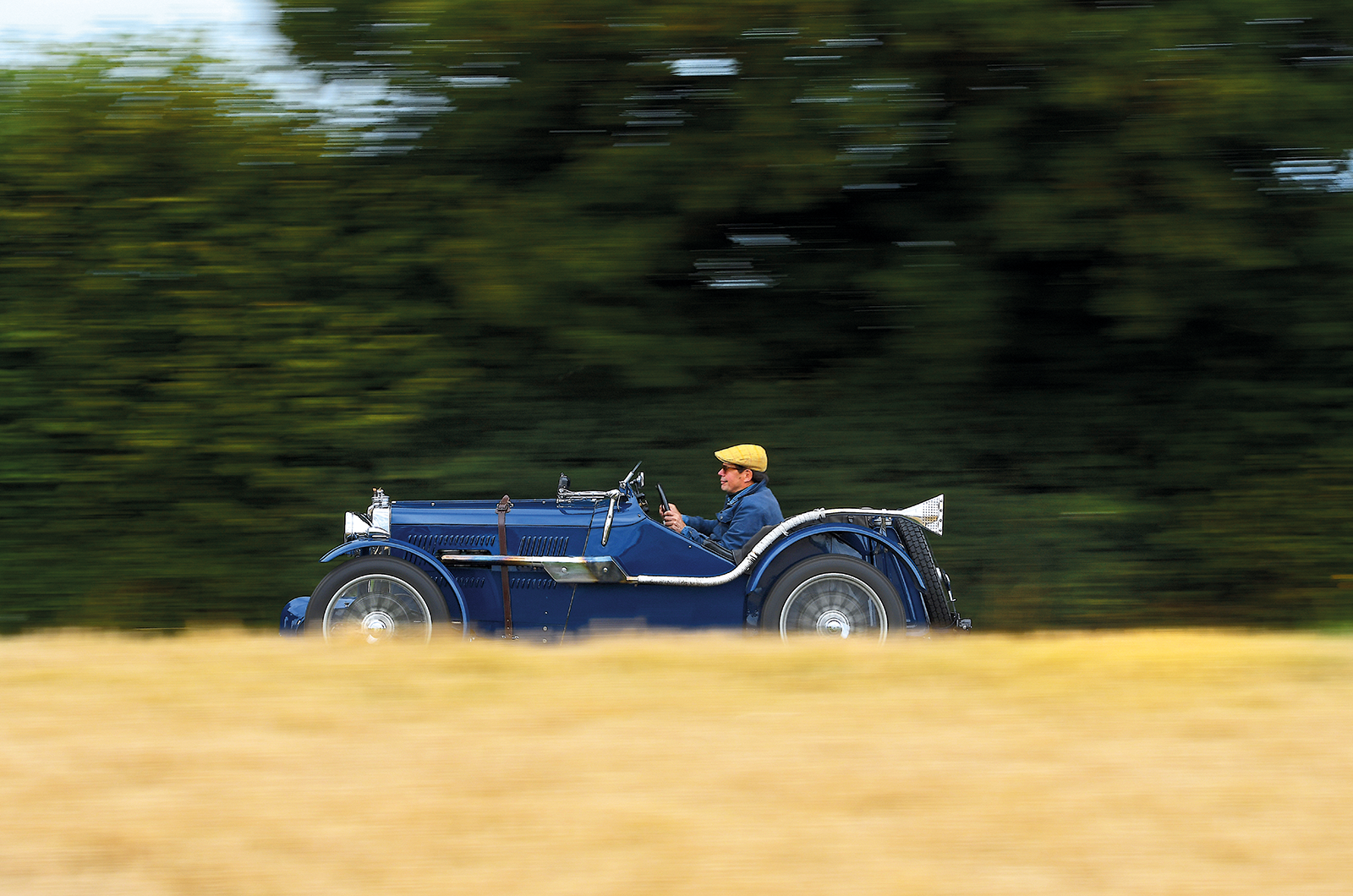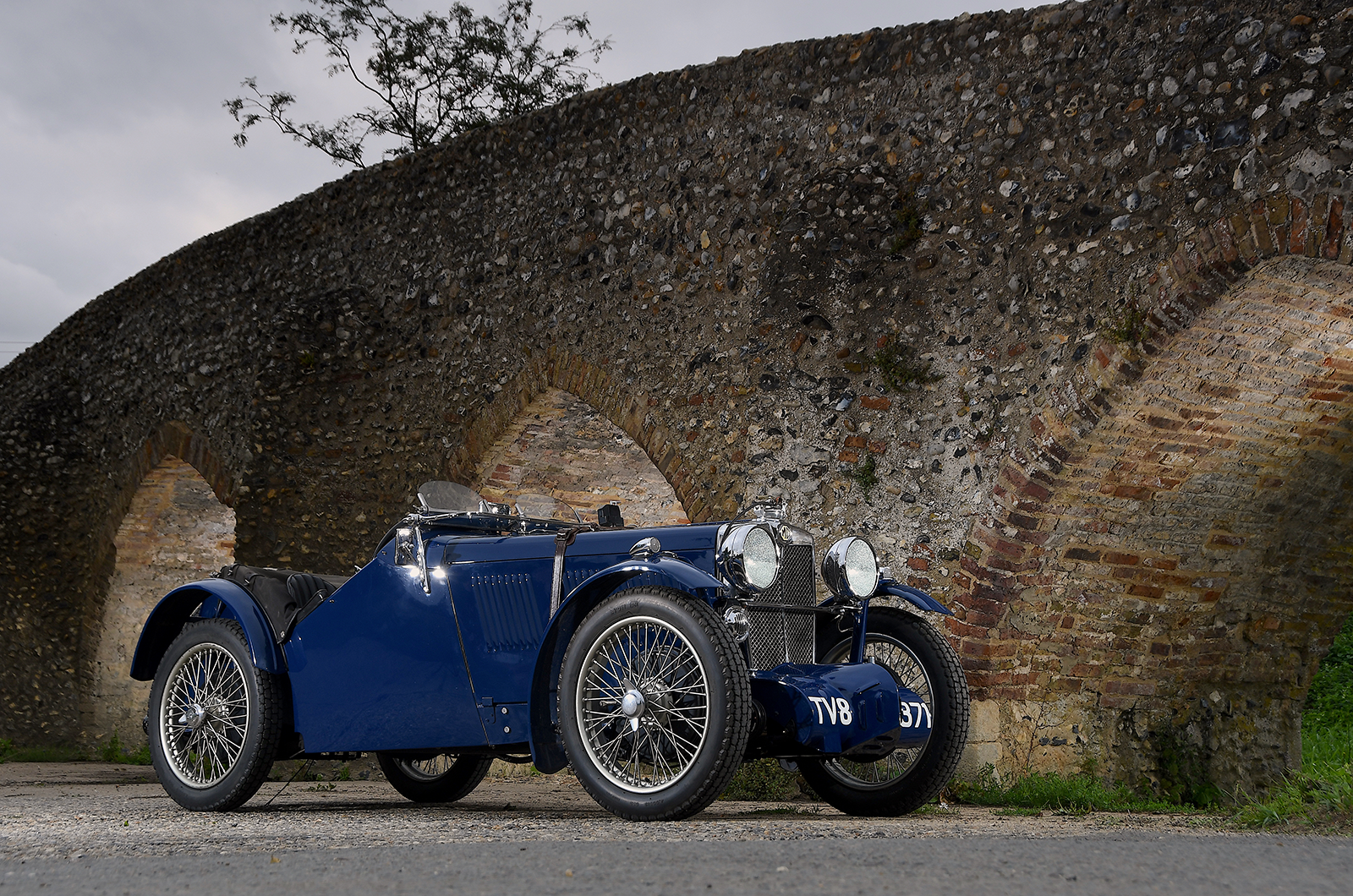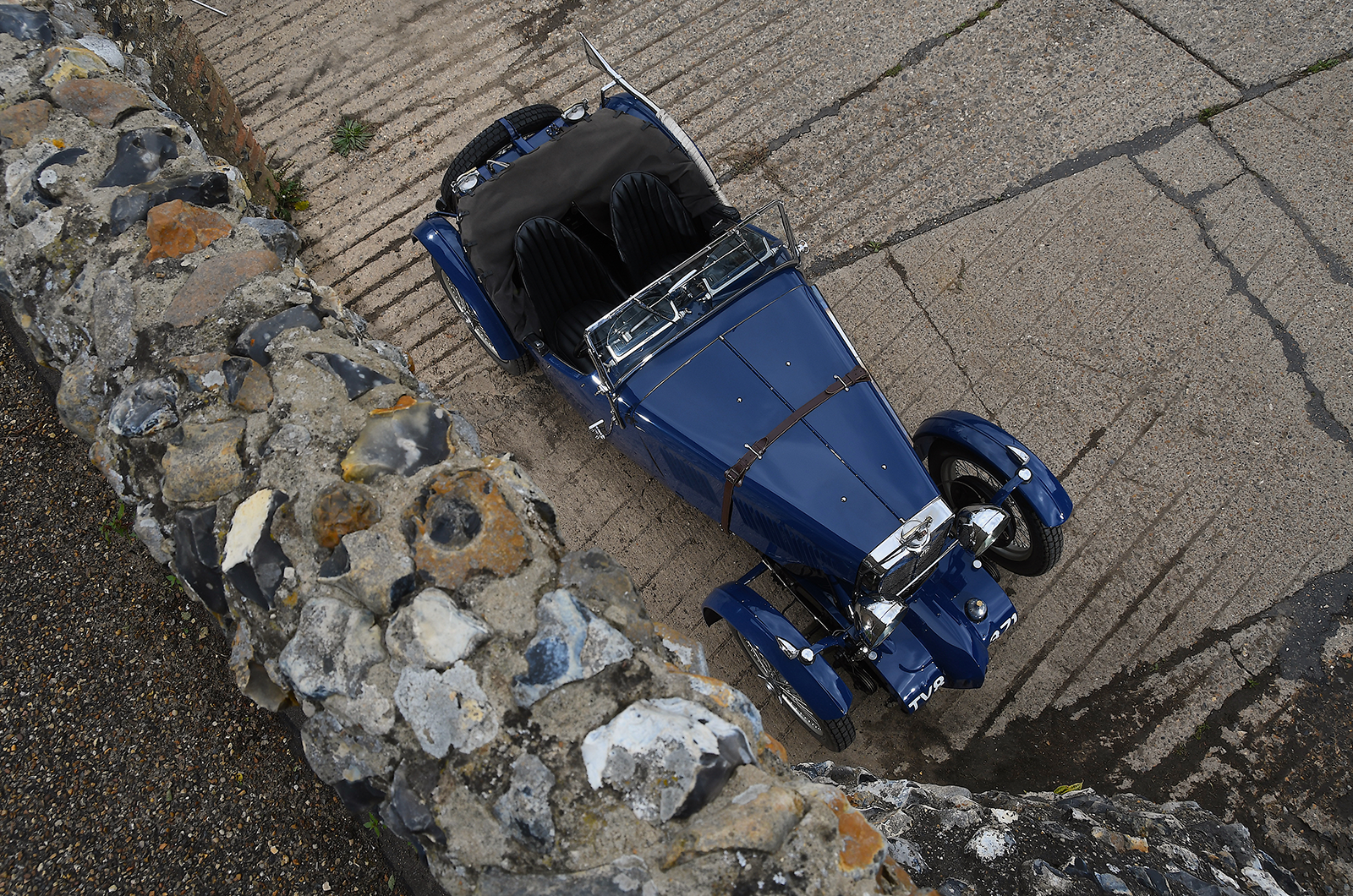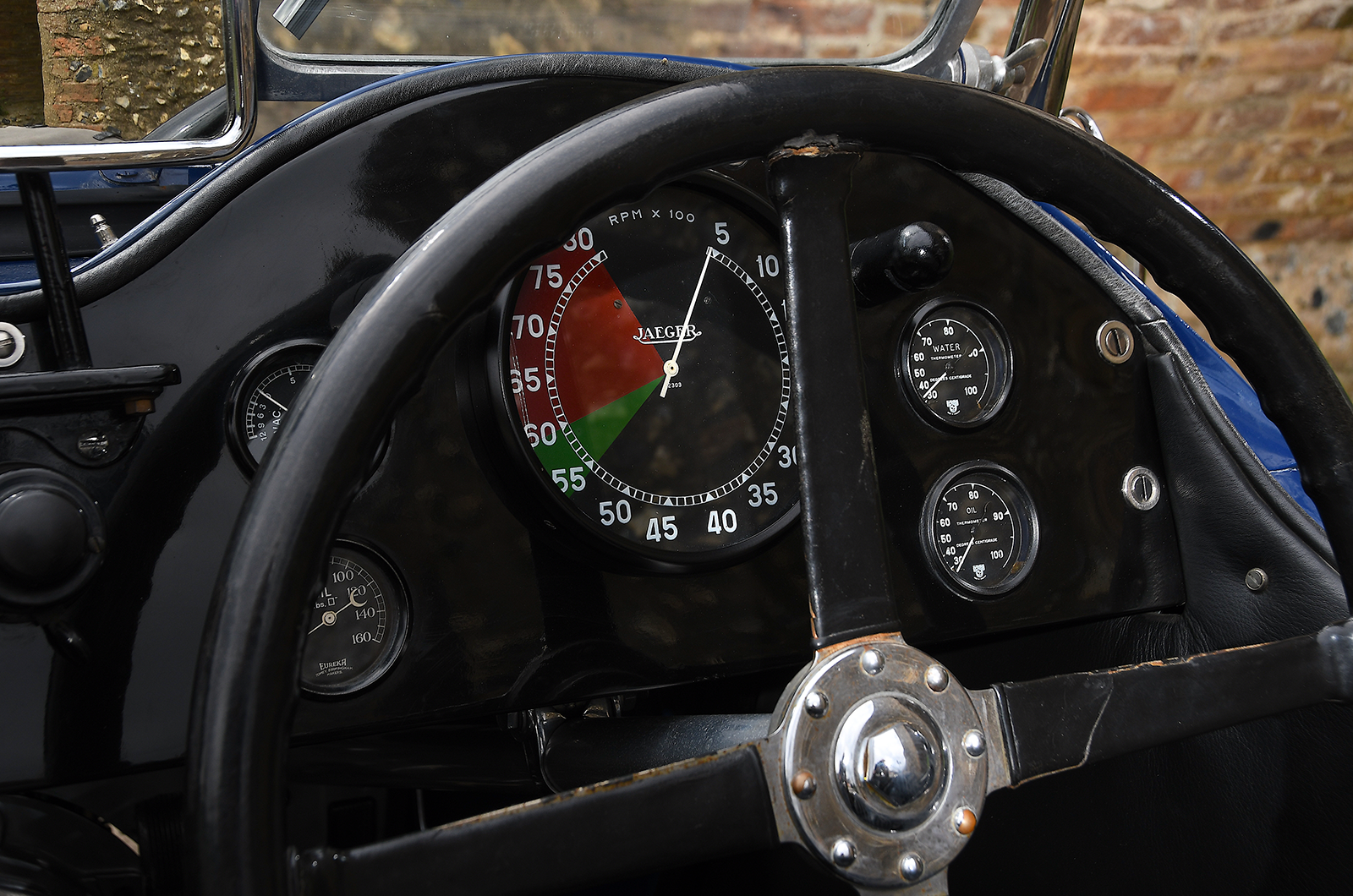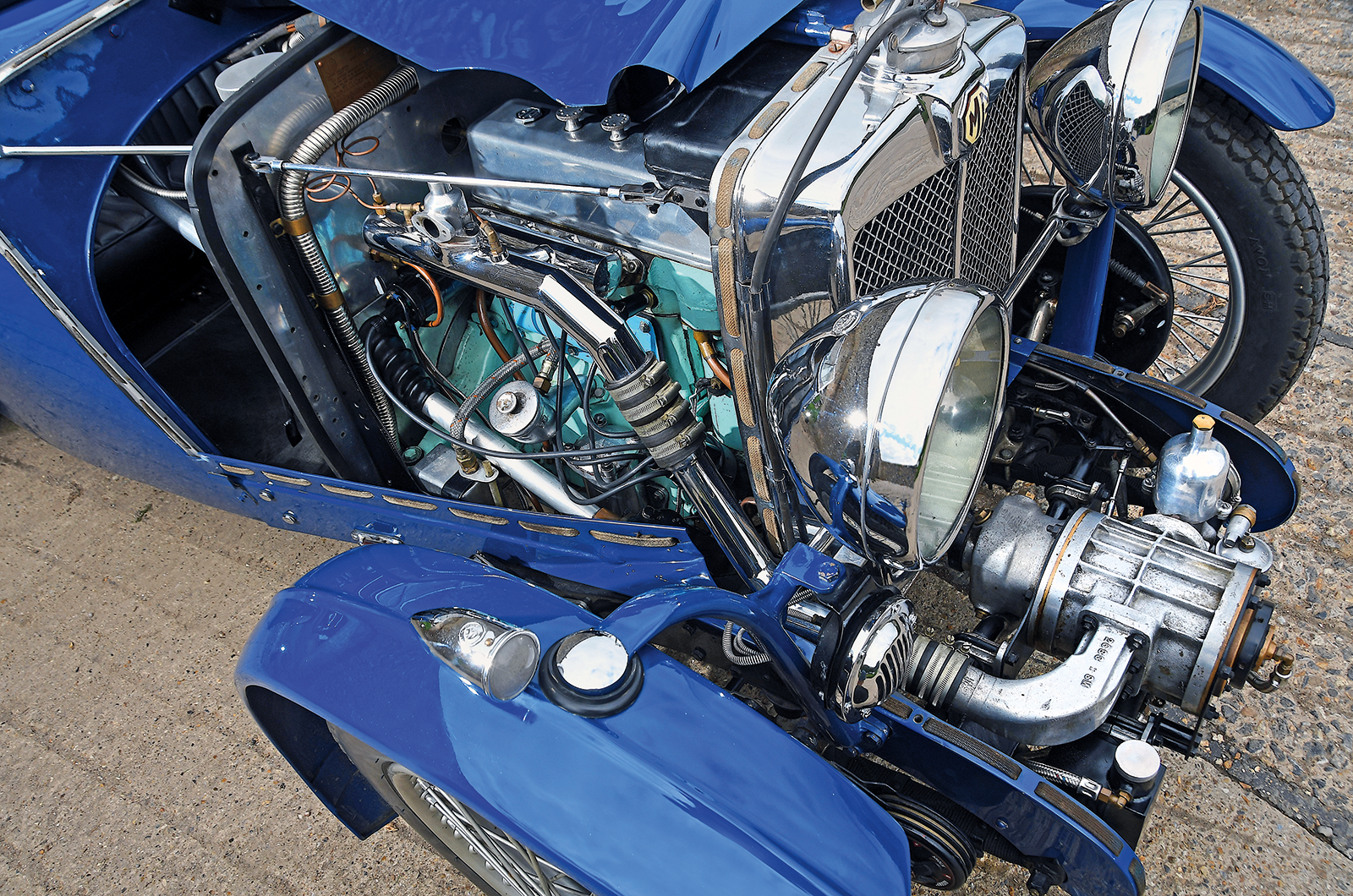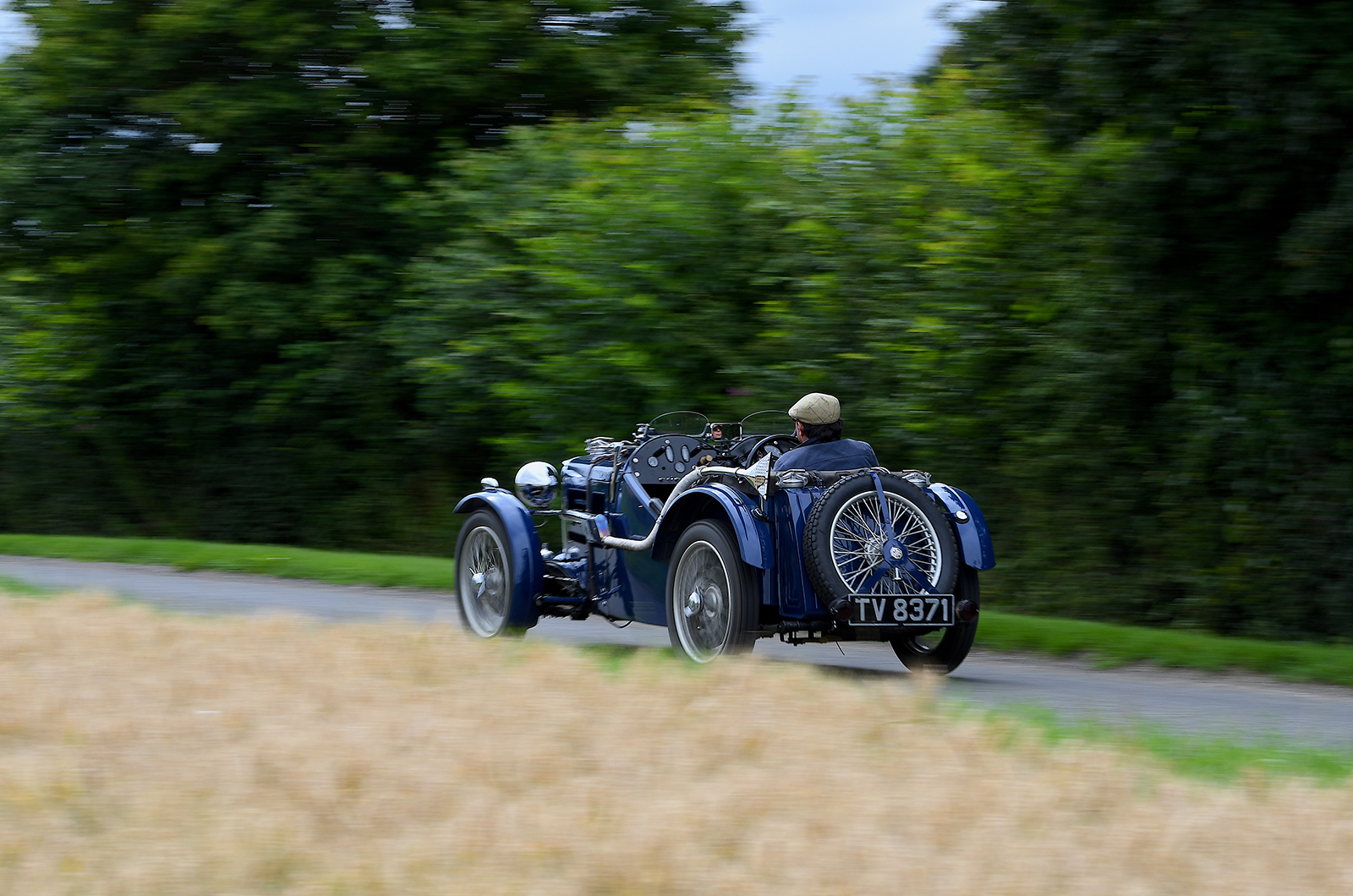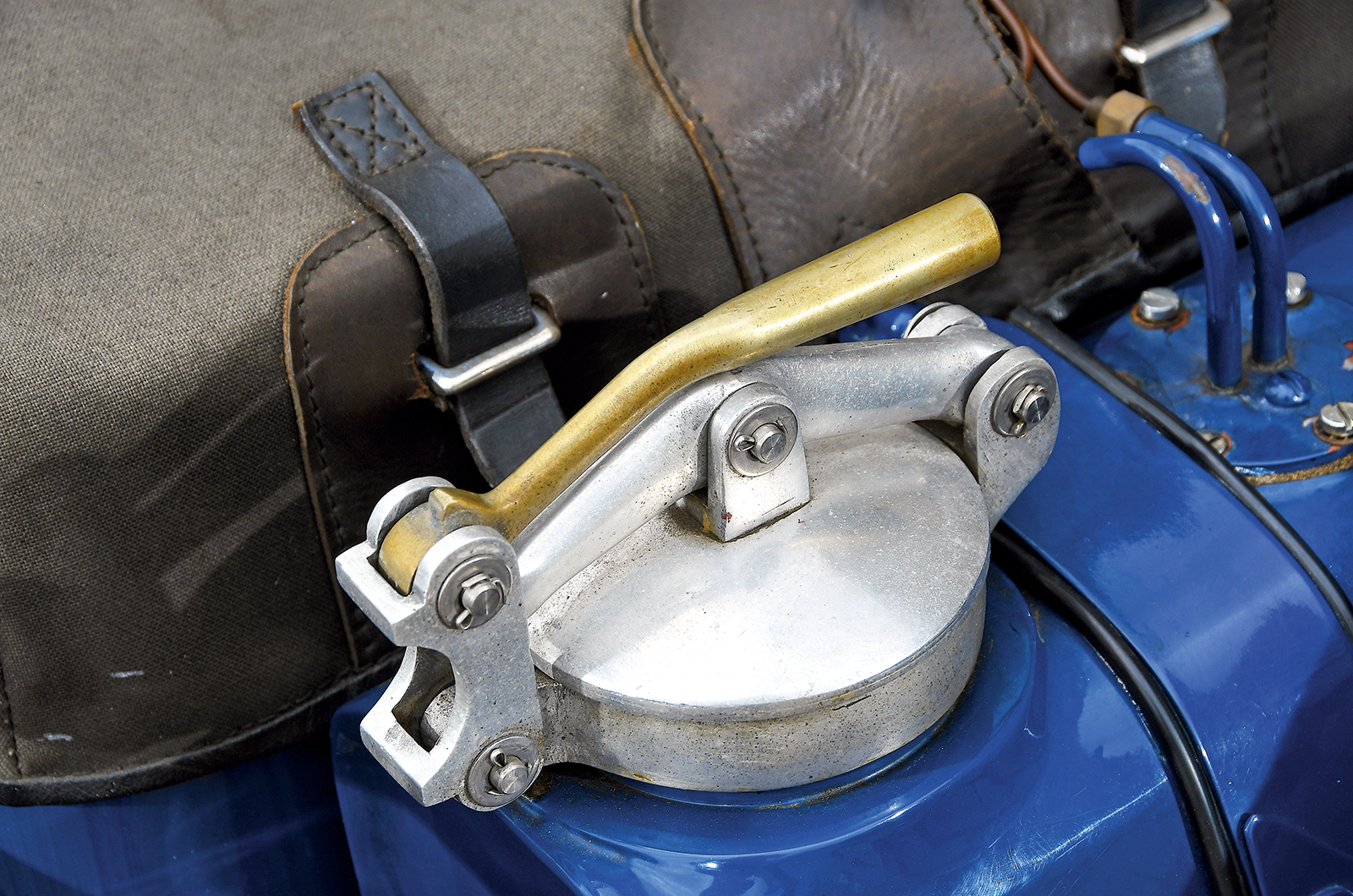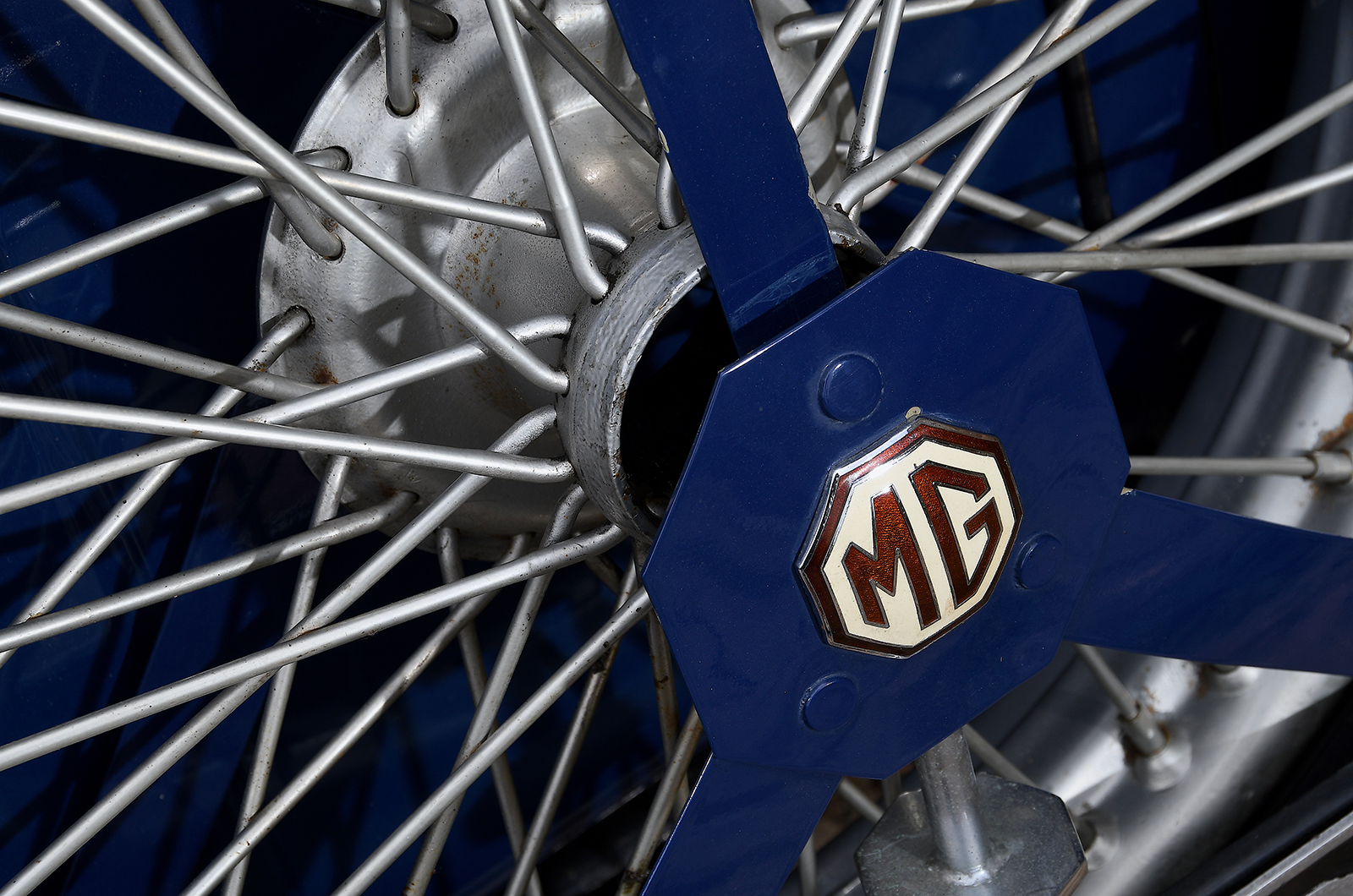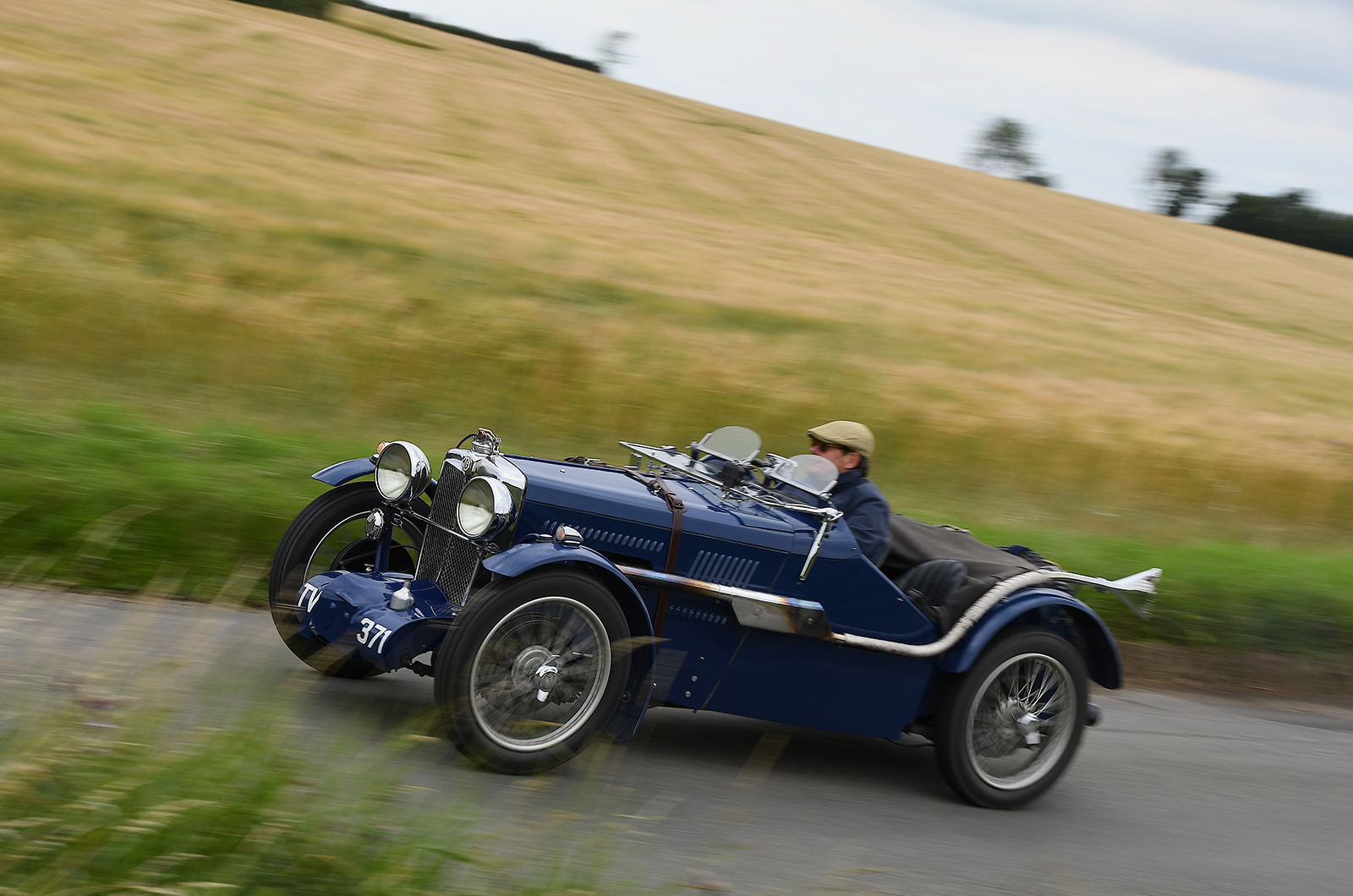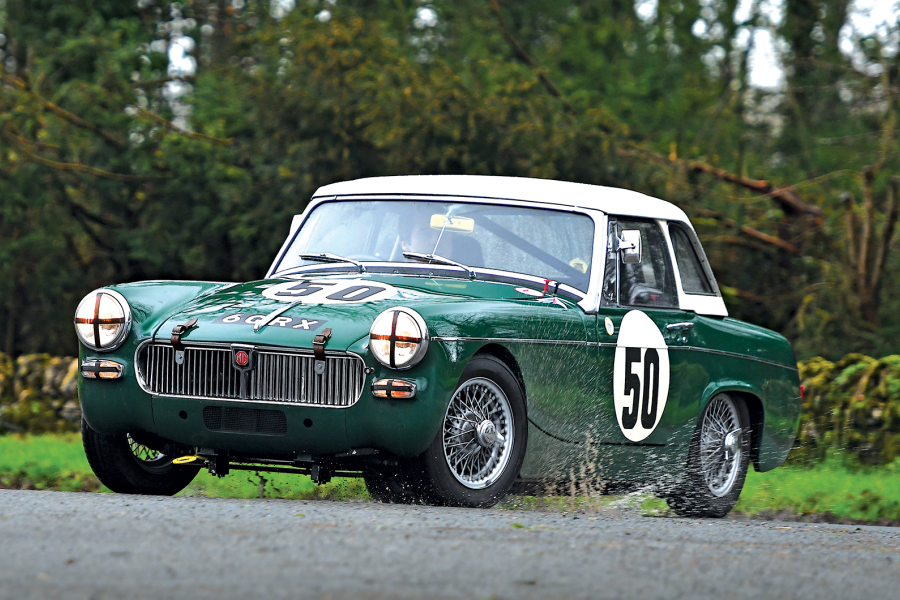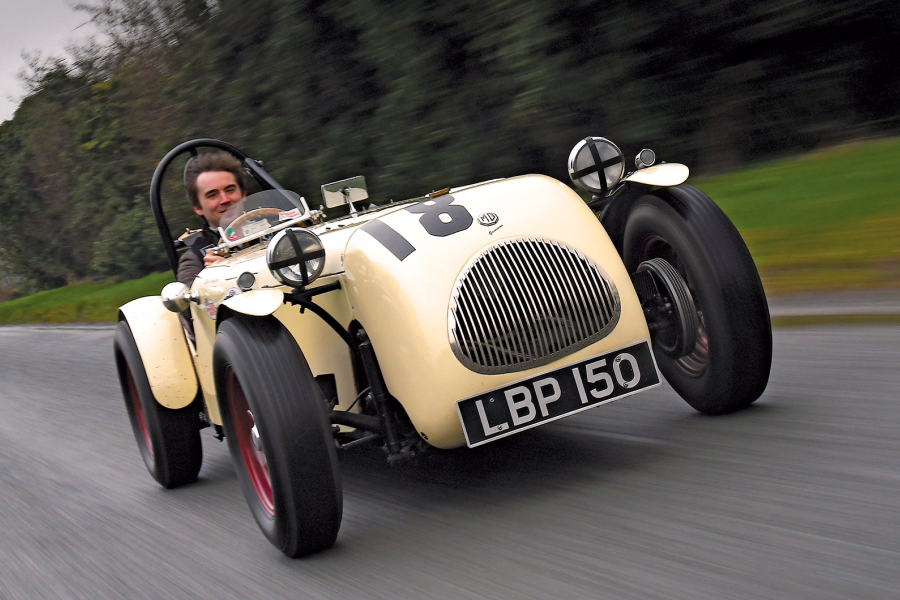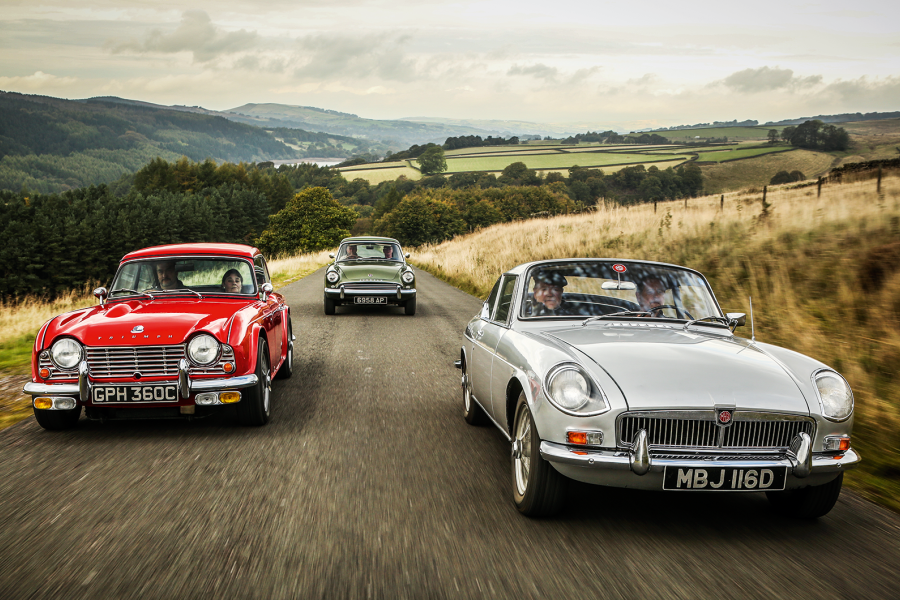After his frustrations at the TT, Fontés remained active in J4 chassis 005 between 1933 and ’35 before he acquired an Alfa Monza.
The green MG was also Fontés’ daily transport, and no doubt clocked up hundreds of miles driving to Donington Park and sand races at Southport. He even loaned the car to his friend A Todd for the 1934 Bol d’Or 24-hour race at Montlhéry.
As Fontés became tempted by bigger machinery, with an Invicta Low Chassis joining his stable, the J4 became redundant and in 1936 005 was sold to J Hewson, who replaced the Powerplus supercharger with a Marshall blower to race at Brooklands.
The J4 eventually ended up in Scotland with Valenti Motors in Glasgow where it tempted Gene Alcott, an American pilot who shipped the MG back home after the war.
The J4 moved to the East Coast and was soon back competing with the newly formed Sports Car Club of America.
Pennsylvania-based Otto Linton ran the car in the Junior Grand Prix on the Watkins Glen road circuit, the first post-war road race in the USA, where it lined up with a mass of new MG TCs, Frank Griswold’s Alfa Romeo 8C 2.9 coupé and Briggs Cunningham ’s hot rod Bu-Merc.
Linton eventually retired with no oil pressure but, undeterred, he later braved Langhorne Speedway before selling in 1952.
The MG changed hands several times through the 1950s before Howard Byron put it into storage.
In February 1971, collector Gary Schonwald spotted the J4 in the classifieds of the New York Times and immediately snapped it up, but soon sold it on to Jerry Goguen, one of the best-known MG connoisseurs in America.
The J4 had remained remarkably original over the years, as Goguen discovered when the car was restored by model guru Colin Tieche.
During the rebuild an authentic Powerplus No 8 supercharger was discovered in France.
Since I was kid in the 1960s, watching club racer Geoff Coles’ immaculate and very fast J4s at Silverstone, I’ve had a special admiration for these early MG Midgets.
Former Brooklands racer Coles ran two: the beautifully restored ex-Dennis Mansell car, chassis 004, and the light blue 006, which he continued to race into his 60s.
Watching Coles gun his perfect red J4 through the old Woodcote and beating younger machinery was always a highlight of MG Car Club meetings, but news of his fatal accident at Snetterton in 1974 really shocked me.
Having ogled those rapid J4s at Silverstone, I’ve always longed to drive one and thanks to John Polson that much-anticipated experience didn’t disappoint.
The stronger ENV gearbox with close ratios has a super-slick change, its rapid action a revelation for a pre-war car.
What the junior ‘four’ lacks in low-down punch, it makes up in the higher range and above 4000rpm it really starts to sing, the sharp bark signalling the J4’s approach long before its arrival.
On deserted country roads, when the view is clear and the surface smooth, the J4 comes into its element as you keep the engine in its powerband and carry impressive speed through empty, sweeping bends.
Here, it’s easy to appreciate Hamilton’s remarkable pace against the big guns. The steering is light and direct, which suits the accurate commands the short car demands to maintain a sharper pace.
Through faster corners the chassis feels taut and tidy, if a little nervous on the tall and skinny 4in-wide tyres, but even with the added blower weight up front there’s no hint of understeer.
There are similarities with riding a fast motorbike, the J4 responding best to a neat and precise technique, while the cable-operated brakes require respect at higher speeds.
Snug in the cockpit, you revel in that fast gearchange and the engine’s extra surge at the top end, and the J4 proves to be enormous fun around scenic and flowing Suffolk back-roads.
These routes have surprising connections with early MGs because the Varsity Speed Trial at Branches Park in Newmarket was held just down the road from Polson’s base.
The grand 18th-century house has long since been demolished and the estate looks faded, but the J4’s character remains as vibrant as ever, its supercharged heart ringing out around secluded lanes in the wheeltracks of young graduates.
To drive one back in 1933 as a 20-year-old must have been even more special.
Images: John Bradshaw
Thanks to John Polson of Polson Motor Company; James Gunn at Ecurie Fusil
READ MORE
Tourer de force: Maserati Tipo 26
Original is best: ex-King Leopold Bugatti Type 59
Meet the rare Reo that proves originality isn’t always best
Mick Walsh
Mick Walsh is Classic & Sports Car’s International Editor

